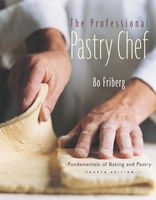Advertisement
Rye flour
Appears in
By Bo Friberg
Published 1989
Rye flour is one of the best-tasting flours for making bread. It is divided into light, medium, and dark categories, as well as pumpernickel flour. As with wheat flour, these grades are determined by the part of the grain that the flour is milled from. The medium grade is the one most commonly used. Pumpernickel flour is made in much the same way as whole wheat flour; it is milled from the entire rye grain, including the bran. Rye flour is almost always mixed with some wheat flour to give it added gluten strength and rising power in a bread recipe because the protein in rye flour forms a very weak gluten structure. Therefore, unless you want a very dense and flat bread, the amount of rye flour in any rye bread dough should not exceed 30 to 35 percent of the total flour weight. This lack of gluten-producing help from the rye flour gives extra responsibility to the wheat flour, so it is even more important to pay close attention to the dough’s temperature and consistency. A small amount of vinegar added to rye bread dough helps bring out the rye flavor.


